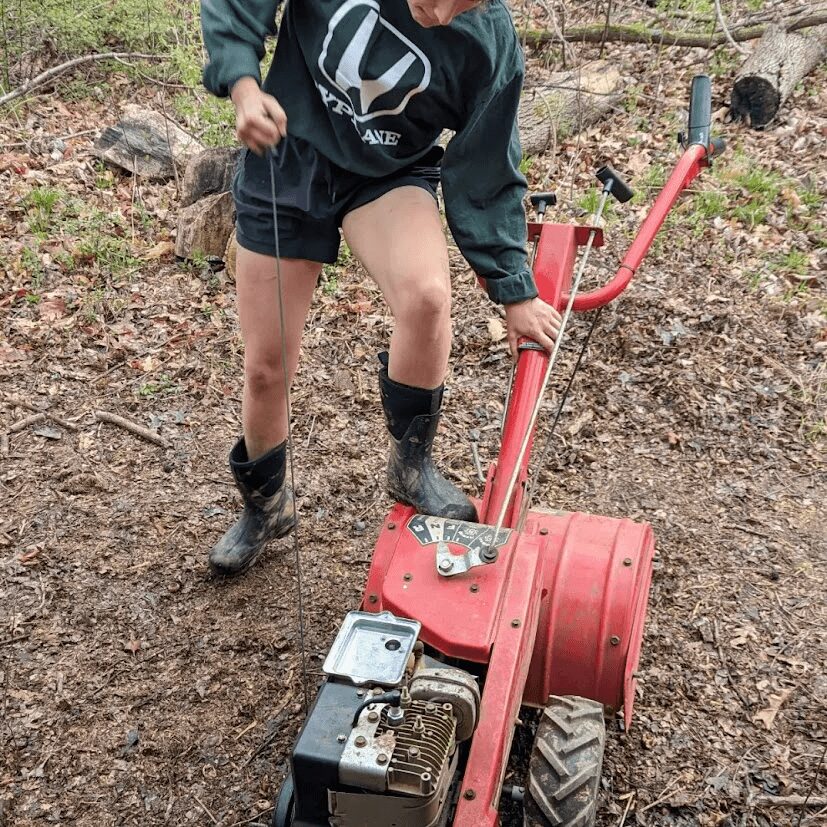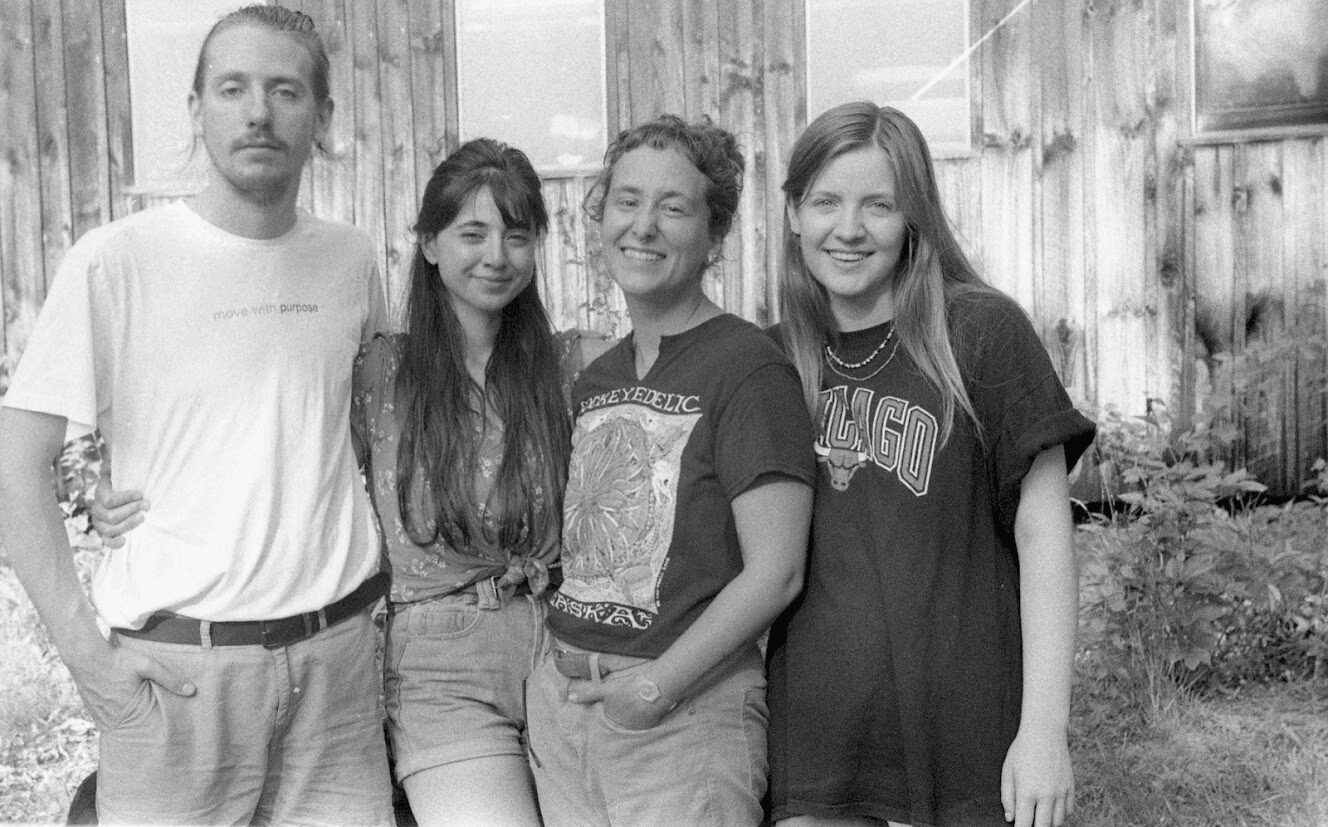Alright – so today we’ve got the honor of introducing you to Dorothy Hartley. We think you’ll enjoy our conversation, we’ve shared it below.
Dorothy, appreciate you joining us today. Can you open up about a risk you’ve taken – what it was like taking that risk, why you took the risk and how it turned out?
When I was 21, some friends and I began to discuss a shared goal of living simply in community, focusing on our artwork and creating a rhythm of life inspired by the Christian monastic tradition. We recognized that it was a big, idealistic dream, and we knew that it would be a challenge to stick to our intention, so we made an agreement: ‘in five years,’ we said, ‘we’ll start whatever it is we’re going to start.’
Meanwhile, my family’s southern Pennsylvania farm was falling into disrepair. My grandparents had lovingly cared for the property since the 1960s, but when my grandfather died in 2009, it became a hard place to visit, and the woods and underbrush started to take over. As conversations with my friends (now living far from one another) evolved, we began to realize that the Hartley farm was the perfect place for us to pursue our intention of creating a community for artists. In the summer of 2023, after five years of planning, we finally moved to the land to restore and honor the Hartley grandparents’ original vision: cultivating the land with reverence, inviting friends and family to come celebrate abundance and creativity.
We spent our first summer on the land without water or electricity, living in tents and on a screened-in porch, cooking over a fire and a camp stove, clearing brush to take back the orchard and the unfinished cabin from the woods. While we weren’t sure what it is we were starting or how we would get the resources we needed, we decided to trust that we would be provided for. And all at once, it came together – we knew we wanted to host artists in community and to spend time restoring the land, and with that in mind, we started The Hartley Residence.
The Hartley Residence (named in honor of my family’s history with the land) exists to empower those in need of restoration through nature, community, and art. We invite the weary to experience personal and natural restoration through artist residencies, retreats, farming, and community events. While we still have a long way to go as we build up our facilities, it has been an immense joy to see our idealistic dream come to fruition through hard work, blind faith, and a trust that we will always be provided for.
I strongly believe that the most difficult step in realizing a dream, plan, or intention is to begin. Start before you feel ready – once you start, it’s hard to stop the momentum.

As always, we appreciate you sharing your insights and we’ve got a few more questions for you, but before we get to all of that can you take a minute to introduce yourself and give our readers some of your back background and context?
Professionally, I’m a miscellaneous freelancer – I’ve done a little bit of everything, from fine art, to marketing and design, to floral design, to winemaking, to manual labor, to teaching yoga. My broad experience has taught me that the way you do one thing is the way you do everything – if you bring the right attitude to one discipline, chances are you can succeed in another.
I’m often more interested in the connections between disciplines than I am in the disciplines themselves, but more than anything, I’m interested in connecting people. As a co-founder of the Hartley Residence, I’m grateful to be able to connect my love of art, agriculture, and the Christian mystical tradition in order to empower those in need of restoration through nature, community, and art.
At the Hartley Residence, we aim to cultivate the creation of art that explores and grapples with Judeo-Christian faith, and to encourage all who visit to pursue art-making and land stewardship as hopeful and transformative acts. We host artists seasonally for the Residency, providing space for them to dedicate intensive energy to contemplation and the creation of new artwork in an encouraging and communal environment while participating in farm rhythms. In addition, we offer retreats for personal renewal for individuals and groups while also working towards ecological restoration of the Hartley land – we call this the Restoration Project.
Finally, we provide tangible outlets to showcase the work of our residents through projects such as Catacombs Press (our literary journal), Rat Gallery (a community-supported art gallery in Washington, DC), and through local partnerships.
The ideal candidate for the residency is an artist who feels that they are at a crossroads, a threshold, or an ‘in between.’ As artists who have grappled with and continue to grapple with matters of faith, we encourage discourse around belief, identity, and our relationship with the natural world, and enthusiastically invite anyone who uses their work primarily to ask questions rather than make statements to reach out and get involved. If this sounds like you or someone you love, send us a message!

How can we best help foster a strong, supportive environment for artists and creatives?
I think there is a lot of unlearning to be done as far as what we value in our culture – art doesn’t necessarily have a utilitarian purpose, so it’s not always given value as something to spend time, money, or energy on. But some of the best things in life don’t have that utilitarian purpose. Art, beauty, and connection are simply good because they are. Art doesn’t need to be profitable in order to be worth something. It doesn’t even necessarily need to be seen by an audience – sometimes just the process of making is enough to enact an inner transformation, enough to bring hope to the artist.
It may not sound like it will cause a major societal shift, but I encourage you to take a deep breath, to consider what it is you value, and to purposefully take time to pursue activities that don’t have a direct utilitarian purpose. Play. Make art. Sit still. Notice what comes up for you, and stay with it. Unprofitable time is rich with possibility.

Is there something you think non-creatives will struggle to understand about your journey as a creative?
I don’t like the word ‘creative.’ It’s lost some of its meaning for me, so I prefer to think in terms of ‘generative energy.’ When I hear the word creative, it sounds like something that’s only for a special type of person, but everyone has generative energy – it’s what causes us to make art and start conversations and fall in love and have babies and start businesses and have arguments and plant gardens. It’s the most human thing in the world to make something out of something else. Even the process of working for a certain amount of time to receive a certain amount of money follows that equation, though it doesn’t quite carry the same magic as cooking a meal or writing a song or starting a relationship.
The bottom line: you are full of generative energy. Making things is not just for a special class of person. It is for you. Creating something out of something else is a matter of attitude – a matter of deciding to be constructive, a matter of willingness to be transformed by what you encounter.
Contact Info:
- Website: https://thehartleyresidence.com
- Instagram: @lizardxqueen_
- Other: Instagram: @thehartleyresidence @ratgallerydc @roadbodytheband
Websites: hartleytown.substack.com





